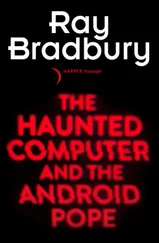Jackie Morby is an investor for a Boston company called TA Associates, and in the spring of 1982 she was familiarizing herself with the home software industry. Gary and I met her for the first time at a Chinese restaurant near the San Francisco airport, and she listened as we told her our story and then talked about the other companies in our industry. She is a very friendly, direct woman. We immediately felt comfortable with her, and she was very patient as she explained to us what venture investors were and how they worked.
And so we were a little miffed when she let us know that TA had invested in Sierra On-Line instead of in our company (even though we had not yet decided that we even wanted any such investment). Although she said that the investment didn’t rule out further talks with us about investing in Broderbund, we assumed that she was only being polite. After all, if she had an interest in On-Line, what would be the point of investing in Brøderbund?
We couldn’t really fault her decision, though. After all, On-Line was a much bigger company than ours (at that time, we had about twenty-five employees; they had about fifty, as I recall). Most important, Ken knew more about computers than we did. Gary and I had started out as hobbyists, whereas Ken had been a hotshot at Informatics and a highly paid software consultant before he and Roberta started On-Line.
He was fluent in assembly language and familiar with all the arcana of programming. In fact, after his years as a mainframe software wizard, game programming for microcomputers was fairly elementary stuff. And he seemed to be the perfect businessman, too. He is an action-oriented person. He sometimes gets ahead of himself, but I think most effective entrepreneurs prefer action to inaction any day. He’d rather do a dozen things and have eleven of them bomb than be careful and avoid mistakes but miss the one real opportunity among the dozen attempts. Overall, he and his company were probably better investment material for TA Associates than we were at the time.
Ken is always flying off to New York and Boca Raton and other venues far from our insular little world in Silicon Valley and Software county, with plans to cut one big deal or another. I remember one such deal, also in 1982, that Ken told me about. He had just come back from New York, where the had obtained his first license and secured the rights to the latest Muppets movie, The Dark Crystal, which he thought had the potential to be a blockbuster film, a la Star Wars. If the film turned out to be as successful as he suspected it would, he told me, he was sure that an enormous number of people would run out to buy On-Line’s latest adventure game, which was also named The Dark Crystal. The sales potential for this project, he assured me, went far beyond the 20,000 units that most well-received software products could be expected to sell. As it turned out, both the movie and the software were only moderately successful.
But it was the 1982 IBM deal that left me wondering if we’d ever catch up with Ken. He had figured that IBM was bound to come out with more and more low-end computers (that means low-priced) like the PC. And he figured that IBM would have to deal with somebody who knew how to provide software for the home, since it certainly didn’t have any experience in that area. So he went down to IBM headquarters in Boca Raton “for a week,” he told me. He made it sound as if he actually sat on the doorstep until the IBM people finally relented and granted him an audience. But he was rather mysterious about whom he met with and whether or not he actually had an official audience.
What had he discovered? IBM has such an enormous influence on any field it enters that it was natural for me to be both curious and apprehensive about whatever plans they might have in the home computer field. But Ken couldn’t tell me a thing. In fact, he couldn’t even tell me that he had actually ever met with anyone at IBM, because of nondisclosure documents that he had been required to sign. Instead, he told me to watch the newspapers and pay attention to the industry rumors. All he would say about On-Line’s new project was that it was going to be big—very big.
The project was the PCjr—or, as it was first called, the Peanut—and it turned out to be not so very big after all. It was one of the very rare instances where IBM made a big entry into a new marketplace and bombed. But Ken was in there, all right. When the PCjr came rolling off the assembly lines, there was lots of On-Line software ready to go along with it. And if the PCjr had done well at first, On-Line would have prospered along with it. But the initial public reaction, considering everybody’s high expectations, was close to disastrous. A year after its less-than-spectacular introduction, the PCjr was redesigned and its price slashed. But even radical surgery failed to resuscitate the project, and IBM ended up doing something it rarely does—admit a mistake. In March 1985, IBM announced that it was going to cease manufacturing the PCjr.
Ken is not easily taken aback, however. He is a gambler by nature and prefers to risk everything for a potentially great reward than to settle for something less. If settling for something less were his way of doing business, he’d still be working for somebody else at a salary of $30,000 or $40,000 a year. And so, even as he was directing a large part of his company’s programming resources to the PCjr project in 1982 and ’83, he was continuing his involvement in other potentially risky ventures and in particular, pursuing his interest in licenses.
Ken explained this interest to me once. More and more people were purchasing software through mass-merchandisers, he said. These outlets don’t have highly informed sales staffs, so customers have to decide on their own what to buy. Since very few of these customers read computer magazines, they will base their decisions on the packaging. If the program looks interesting or familiar, they will be drawn to it.
That’s what licensing is about: If you are a software publisher, you buy the right to use some famous character or name on a product as a means of drawing the consumers interest to that product. Licenses can be very expensive—Atari is rumored to have spent more than $20 million for the right to use names and characters from the movie E.T. on some of its software. Ken didn’t pay that much initially. In fact, he had obtained the license for the arcade game Frogger for less than $50,000 in royalty guarantees. But he had to pay more for the next ones.
The first was his deal with Sydney Development Corporation to create a series of programs based on the characters from the comic strips B.C. and The Wizard of Id. Ken didn’t say exactly what the deal was, but he did say that he had to commit to more than a million dollars in royalties, which means that you have to pay the royalties by a particular guarantee date whether or not you’ve sold that many copies of the product. In Ken’s case, he said he’d owe $1 million in royalties by 1987. And having done that once, it wasn’t so hard to do it a second time. When Texas Instruments, which had licensed Disney characters for a series of educational programs, bailed out of the microcomputer business, it no longer had an interest in its Disney license and just wanted to get out from under its commitments to Disney.
Ken badly wanted the Disney license. It fit right in with where he was headed—into educational software. Disney had just the clean-cut family image that would do well in that market. The license required multimillion-dollar payments to Disney—but not before 1987. Ken figured that he’d either be broke or able to pay them off easily by then. So he cut a deal and designed a whole line of educational software around the Disney characters.
Читать дальше










